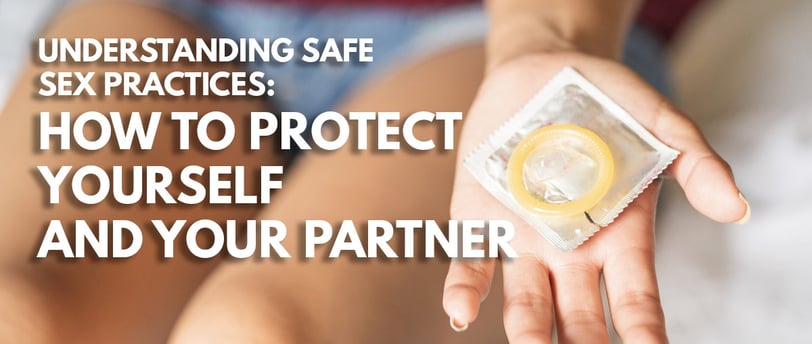Claim your free toy from Lust Collection's grand opening gift!
Understanding Safe Sex Practices: How to Protect Yourself and Your Partner
Understanding Safe Sex Practices: How to Protect Yourself and Your Partner" is a comprehensive guide aimed at promoting sexual health and safety. It covers essential strategies for reducing the risk of sexually transmitted infections (STIs) and unintended pregnancies, including the use of condoms and other barrier methods, effective communication with partners, and regular health check-ups. This resource provides practical advice and encourages informed decision-making to ensure a healthy and respectful sexual relationship.
SEXUAL HEALTH TIPS
Ms. Lusty
8/27/20242 min read


When it comes to sexual health, understanding and practicing safe sex is crucial. Not only does it help prevent sexually transmitted infections (STIs) and unintended pregnancies, but it also promotes a healthier, more respectful sexual relationship. In this blog, we'll delve into the key aspects of safe sex practices and provide practical tips to help you protect yourself and your partner.
Why Safe Sex Matters
Safe sex isn't just about preventing diseases or avoiding pregnancy; it's about fostering trust and ensuring both partners feel respected and cared for. Here are some compelling reasons why safe sex is important:
Prevention of STIs: Many sexually transmitted infections, such as chlamydia, gonorrhea, and HIV, can be asymptomatic, meaning you or your partner might not even know you're infected. Safe sex practices help reduce the risk of transmitting or contracting these infections.
Avoiding Unplanned Pregnancies: Effective contraception methods help prevent unintended pregnancies, allowing you to plan your future and avoid potential complications.
Enhanced Communication: Discussing safe sex practices with your partner fosters open communication and mutual understanding, strengthening your relationship.
Essential Safe Sex Practices
Use Barrier Methods: Condoms are one of the most effective ways to protect yourself and your partner from STIs and unwanted pregnancies. Both male and female condoms are available, and using them consistently and correctly is key. Other barrier methods include dental dams for oral sex.
Get Regular STI Screenings: Regular check-ups and STI screenings are vital for maintaining sexual health. Even if you or your partner feel healthy, getting tested helps catch any infections early and prevents their spread.
Practice Mutual Monogamy: Being in a mutually monogamous relationship where both partners are free from STIs can significantly reduce the risk of transmission. However, it’s still important to use protection until both partners are tested and the results are known.
Use Contraception: In addition to condoms, other forms of contraception, such as birth control pills, patches, and implants, can help prevent unintended pregnancies. Discuss your options with a healthcare provider to find the method that works best for you.
Educate Yourself and Your Partner: Understanding sexual health, including how STIs are transmitted and prevented, empowers both partners to make informed decisions. Share knowledge and resources to ensure both of you are on the same page.
Communicate Openly: Open and honest communication about sexual health, boundaries, and preferences is crucial. Discussing your sexual history, STI status, and contraception use helps build trust and ensures both partners are comfortable and informed.
Addressing Common Misconceptions
"I don’t need protection if we’re both healthy": Even if both partners appear healthy, STIs can be asymptomatic. Protection is essential to prevent potential transmission.
"Condoms are uncomfortable": Many find that trying different types or brands of condoms can improve comfort. Lubricated condoms and those designed for sensitivity can enhance pleasure while offering protection.
"Only women need to worry about contraception": Contraception is a shared responsibility. Both partners should be involved in discussions and decisions regarding contraceptive methods.
Conclusion
Safe sex practices are a fundamental aspect of sexual health and well-being. By using barrier methods, getting regular screenings, practicing open communication, and educating yourself and your partner, you can protect yourselves from STIs and unintended pregnancies. Remember, safe sex is not just about protection; it's about creating a respectful, trusting, and healthy relationship. Prioritize your sexual health and the health of your partner, and enjoy a fulfilling, safe sexual experience.
